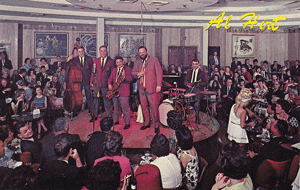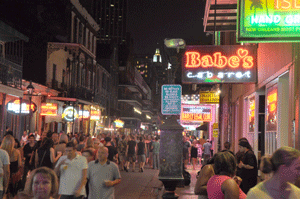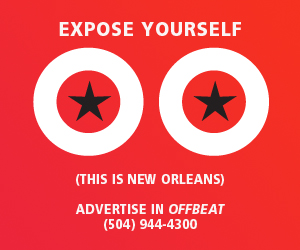I’ve been thinking about Bourbon Street.
Yesterday I received a visit from Professor Nestor Regino, who came by the office to present me with a copy of a report he had prepared on New Orleans post-Katrina. Nestor and I had visited—and he had interviewed me—in 2009, when he was working on the report. He also interviewed musicians Bob French, Ellis Marsalis, Smokey Johnson, Troy Sawyer, reps from Sweet Home New Orleans and Make It Right Foundation, Barry Smith of the Louisiana Music Factory, and more.
Now Nestor is from San Francisco and his visits to New Orleans were done while he was on sabbatical.
In our visit yesterday, we started comparing notes about the differences between musicians there and here.
What was demonstrated most clearly in our conversation was that musicians in New Orleans are much more willing to share their musical expertise and their cultural backgrounds. We know that local musicians play not in one band but they spread themselves around to many different groups as band leaders and as sidemen. Thus everyone learns and interacts with everyone else. There’s a generosity of musical spirit that only exists here.
If you’ve experienced New Orleans music, you know this. This means is that there’s a fantastic opportunity for musical forms to grow, change, become cross-pollinated with others’ styles and ideas, which is something that makes our music scene living, growing and changing daily.
Nestor, being a musician himself, also pointed out that where’s he’s from, the music community really doesn’t welcome in others easily, unlike in New Orleans, where it seems that everyone is welcomed to “sit in.”
It’s been four years since Nestor visited New Orleans and he pointed out a lot of things that he found different about the city. Strangely, he said that Bourbon Street now seems to feature more soul and R&B rather than cover rock music (or maybe it was just the night he was there, this time around).
Being interested in Bourbon Street as both a cultural phenomenon and a business center, it’s interesting to note that the nature of the businesses on the street have changed considerably over time.
When I was a kid, Bourbon Street had a bunch of music clubs owned by locally-famous musicians (Al Hirt and Pete Fountain). There were also a plethora of “adult entertainment” businesses that touted performers likes “Lilly Christine (The Cat Girl),” “Linda Brigette (The Cupid Girl)” and “Evangeline (The Oyster Girl).” Bourbon was a strip that became known worldwide as “sin city” because of its many strip clubs.
But back in the 1960s, District Attorney Jim Garrison decided to crack down on the rampant vice in the Quarter, and especially on Bourbon, and he succeeded in closing down many of the strip clubs. In fact there are currently only 12 businesses in the heart of Bourbon that can now be considered adult entertainment, according to research that’s in progress by the French Quarter Management District. About 50 years ago, there were four times that number.
Once the street was cleaned up by Garrison and rid of illegal liquor sales, gambling and prostitution activities, Bourbon Street began changing. Music became more homogenized to appeal to visitors, and a lot of local jazz musicians who had had musical homes on the street left. Souvenir and t-shirt shops, and more corporate-type restaurants and bars opened on Bourbon, thus robbing the street of its unique cultural appeal.
Too bad. I can deal with local music and music clubs, strippers, burlesque clubs, Galatoire’s, gay clubs, bars that feature live musicians and real local music, and more swanky places like Irvin Mayfield’s Club. But I have a more difficult time dealing with “Huge Ass Beers,” t-shirt shops that sell cheesy sshirts and souvenirs, half-assed “adult entertainment,” bars that don’t try to showcase the city’s local musicians in a way that truly showcases our culture, and chain-style restaurants and clubs. Bourbon Street—despite its reputation as a den of iniquity—could use a re-do. Bourbon has become, for the most part, a street dedicated to getting as much money as possible from unsuspecting tourists. I’m not saying by any means that everything on Bourbon is crappy, because it’s not. What I am saying is that some serious thought, planning, and revamping needs to become part of the city’s plan for Bourbon Street: we have a captive audience on Bourbon, so why aren’t we trying to raise our standards of what’s on the street rather than simply appealing to the lowest common denominator of tourist?






